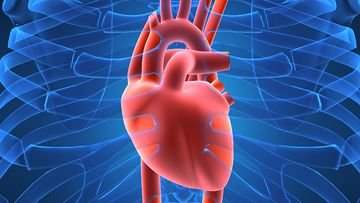What is Total Anomalous Pulmonary Venous Connection?

Total Anomalous Pulmonary Venous Connection (TAPVC) is a rare but serious congenital heart condition in which the pulmonary veins connect abnormally to other parts of the body instead of to the left atrium. This results in oxygen-rich blood returning to the wrong side of the heart, causing a mix of oxygenated and deoxygenated blood. The body’s tissues don’t receive adequate oxygen, leading to various symptoms and complications.
Early diagnosis and timely treatment are crucial for the survival and quality of life of children born with this condition. Dr. Dinesh Mittal, a leading Cardiothoracic Surgeon, explains, “TAPVC is a complex condition, but with advanced surgical techniques, the outcomes have dramatically improved. Early intervention gives the best chance for a healthy life.”
What Causes TAPVC?
The exact cause of Total Anomalous Pulmonary Vascular Connection (TAPVC) is still unknown. Still, it is believed to develop during foetal growth when the veins that return blood from the lungs fail to connect correctly with the left atrium. In a normal heart, oxygenated blood flows from the lungs to the left atrium through the pulmonary veins.
However, in TAPVC, these veins bypass the left atrium and connect elsewhere, like the superior vena cava or coronary sinus, which results in a lack of oxygen supply to the body.
Dr. Dinesh Mittal emphasises the importance of early detection, stating, “A significant number of cases are identified either in the first few days after birth or during routine scans. The sooner we detect the abnormality, the better we can plan the treatment and ensure positive outcomes.”
What Are the Types of TAPVC?
TAPVC is classified into four main types based on where the pulmonary veins connect:
- Supracardiac TAPVC: The veins drain above the heart, usually into the superior vena cava. This is the most common type of TAPVC, accounting for around 50% of cases.
- Cardiac TAPVC: The veins drain directly into the heart, typically into the right atrium. This form accounts for about 20% of cases.
- Intracardiac TAPVC: The veins drain below the heart, often into the inferior vena cava. This is a more severe form, as the blood has to travel further to reach the heart.
- Mixed TAPVC: In this rare type, the veins connect in more than one place, which complicates both diagnosis and treatment.
Each type requires a tailored TAPVC surgery approach, depending on the anatomy and severity of the condition.
What Are the Symptoms of TAPVC?
Babies born with TAPVC may show various symptoms, depending on the severity of the condition. Common TAPVC symptoms include:
- Bluish skin (cyanosis) due to poor oxygenation
- Rapid breathing or difficulty breathing
- Poor feeding or difficulty gaining weight
- Lethargy or fatigue
The severity of these symptoms can vary, with some infants appearing normal at birth and gradually deteriorating. “Parents often notice something is wrong when their baby isn’t feeding well or seems overly tired,” says Dr. Mittal. “That’s usually when we intervene and perform urgent tests to confirm the diagnosis of TAPVC.”
How is TAPVC Diagnosed?
To diagnose TAPVC, doctors typically perform a range of tests, such as echocardiograms, chest X-rays, and sometimes an MRI. These tests help confirm the abnormal blood flow pattern and determine the type of TAPVC.
One patient, Anjali, whose newborn was diagnosed with Total Anomalous Pulmonary Venous Connection (TAPVC), shared, “We were devastated when we got the diagnosis. But Dr. Mittal was incredibly reassuring. He explained every step of the process and helped us understand the path forward. Thanks to his expertise, our baby is thriving today.”
What is the Treatment for TAPVC?
The only definitive treatment for TAPVC is surgery. TAPVC surgery aims to reconnect the pulmonary veins to the left atrium, restoring normal blood flow. This surgery is usually performed in infancy, as delaying it can lead to severe complications.
Dr. Dinesh Mittal explains the surgical process: “In TAPVC surgery, our goal is to redirect the veins to their proper position. It’s a delicate procedure, but with modern techniques, we can ensure a high success rate.” The success of the surgery depends on the child’s condition at the time of diagnosis, the type of TAPVC, and whether any other complications are present.
One of Dr. Mittal’s patients, Priya, whose child underwent TAPVC surgery, shared her experience: “When we heard our baby needed heart surgery, we were terrified. But after meeting Dr. Mittal, we felt reassured. The surgery went perfectly, and today, our child is running around like any other kid. We’re forever grateful to Dr. Mittal for saving our baby’s life.”
What Happens After TAPVC Surgery?
After TAPVC surgery, children require intensive care monitoring to ensure that their hearts and lungs are functioning correctly. Most children recover well, although they may need regular follow-ups to monitor their heart health as they grow. In some cases, minor complications like arrhythmias (irregular heartbeats) or pulmonary hypertension (high blood pressure in the lungs) can occur, but these are often manageable with medication.
Dr. Mittal advises parents, “The post-surgery phase is crucial. With proper care and follow-up, the majority of children who undergo TAPVC treatment live healthy, active lives. It’s heartening to see them grow up without limitations.”
What Is the Cost of Total Anomalous Pulmonary Venous Connection (TAPVC) Surgery in India?
The cost of Total Anomalous Pulmonary Venous Connection (TAPVC) surgery in India ranges from INR 4,00,000 to INR 8,00,000 (approximately 4,800 to 9,600 USD). Factors influencing the cost include hospital location (metropolitan hospitals charge more), the surgeon’s expertise, type of hospital (private hospitals are costlier), pre and post-operative care, ICU stay duration, and potential complications. Additionally, the cost can vary based on medications, follow-up care, and the patient’s overall condition.
What is the Difference Between TAPVC and TAPVR?
One common question parents have is, “What is the difference between TAPVC and TAPVR?” The terms TAPVC (Total Anomalous Pulmonary Venous Connection) and TAPVR (Total Anomalous Pulmonary Venous Return) are often used interchangeably. Both refer to the same condition where the pulmonary veins connect abnormally. The term TAPVR emphasises the return of blood, while TAPVC focuses on the connection. In medical practice, however, the terms are used synonymously, and there is no clinical difference between the two.
Conclusion
Total Anomalous Pulmonary Venous Connection (TAPVC) is a rare yet treatable condition. Thanks to advancements in surgical techniques, children with TAPVC have a very high chance of living normal lives post-surgery.
FAQs
1. Is TAPVC hereditary?
TAPVC is generally considered a sporadic congenital disability, with no clear hereditary patterns established.
2. Can TAPVC be detected before birth?
Yes, TAPVC can sometimes be identified during routine prenatal ultrasounds.
3. What is the long-term outlook for children with TAPVC?
With timely surgery and proper follow-up care, many children with TAPVC can lead healthy, active lives.
4. Are there any lifestyle restrictions after TAPVC surgery?
Generally, children can resume normal activities after recovery, but they may need periodic check-ups with their cardiologist.
5. What should parents look for after TAPVC surgery?
Parents should monitor for any signs of complications, such as difficulty breathing or unusual fatigue, and maintain regular follow-up appointments with their healthcare provider.
Explore more blogs: What Are the Available Treatments for TAPVC?
